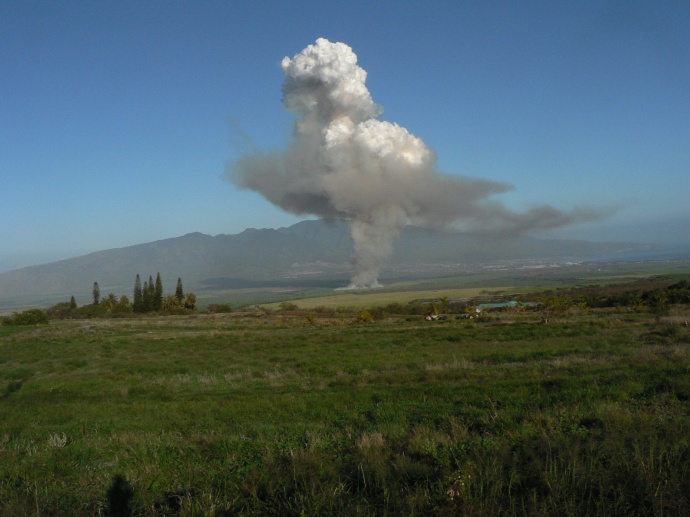Cane Burning Study: Health Officials… Take Action
According to a UH Hilo Stories article published on Oct. 23 (“Large cane burns on Maui linked to respiratory distress“), a recent study based on hospital and other data from Maui concluded that there was a “significantly higher incidence of respiratory distress in smoke-exposed regions when greater amounts of acres were burned.”
The study explored sugarcane burning on Maui and its effects on the respiratory system. It concluded: “Health officials should consider actions to reduce the negative health outcomes associated with sugarcane burning practices.”
The study, “Association between sugar cane burning and acute respiratory illness on the island of Maui,” published in the October 2015 issue of the Environmental Health journal, is already being referenced in a lawsuit to stop sugarcane burning on Maui—the first case to be heard by Hawaiʻi’s recently established Environmental Court.
“These results provide additional evidence of the harmful effects of sugarcane burning on respiratory functioning, specifically a ‘dose’ response based on the number of acres burned as an indicator of volume of smoke,” the study said.
“While additional research will advance scientific understanding of the relationship between air pollution and health, public health officials should consider taking action based on the accumulation of research to date,” the study concluded.
The UH Hilo Stories article said Karen Pellegrin, who was responsible for the acquisition of the hospital data used in the study through a partnership with Hawai‘i Health Information Corporation, was not surprised by the study’s findings.
“We know that air pollution is associated with morbidity and mortality, ”Pellegrin said.
A major factor taken into account in the study was the presence of vog from volcanic emissions on Hawaiʻi Island.
According to Maui County regulations, cane burning is only allowed on days when vog is not present. Therefore, on non-burn days, sometimes vog is present as an environmental factor responsible for higher occurrences of respiratory illness, making it more difficult for researchers to compare instances of respiratory distress on burn days with those on non-burn days.
To ensure that they were isolating the effects of cane burning on the respiratory system, researchers developed an innovative control through the use of global positioning system mapping, wind direction and other factors.
“While vog pollutants affect the island evenly, burning only affects those regions downwind of the burn,” Pellegrin said in the article.
Using this regional technique, researchers we able to detect an association between the number of acres burned and the number of prescriptions filled for acute respiratory distress using and hospital and pharmacy data.
The study was conducted by principle investigator Christina Mnatzaganian, a former assistant professor at the University of Hawai‘i at Hilo Daniel K. Inouye College of Pharmacy. She is now an assistant professor at the Skaggs School of Pharmacy and Pharmaceutical Sciences in San Diego, the article said.
Pellegrin is the director of continuing/distance education and strategic planning at the UH Hilo pharmacy college. The article said she also helped edit the manuscript and interpret the results and conclusions.
Jill Miyamura of the Hawai‘i Health Information Corporation, Diana Valencia and Lorrin Pang from the District Health Office of Maui also assisted with the study.
Portions of the study in this article are reproduced or paraphrased with the permission of Creative Commons.









